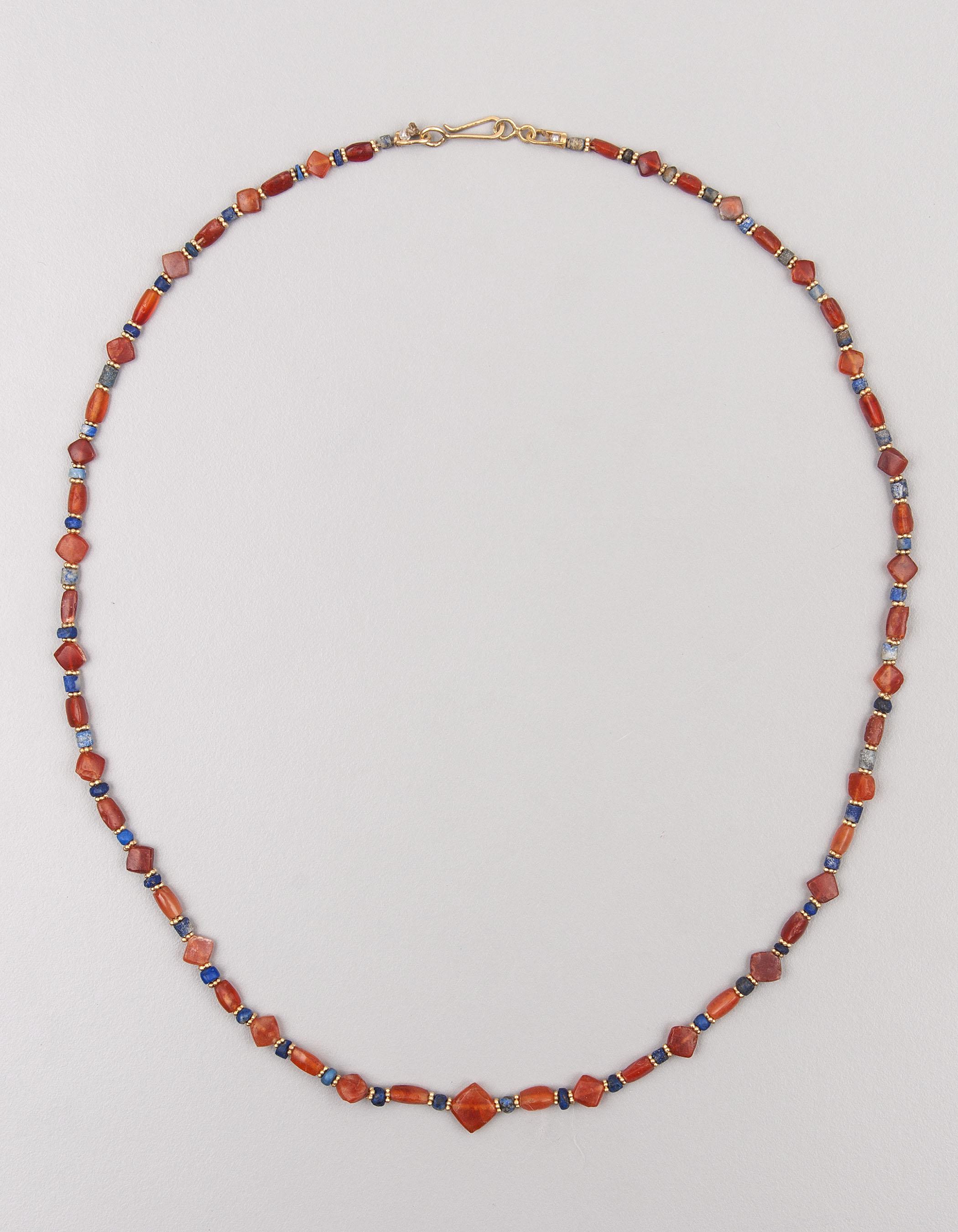Ancient Carnelian Beads with Lapis Lazuli, Vermeil Spacers, and Diamond Shaped Center Bead
Collection:
Swat Valley
Material:
Carnelian, Lapis Lazuli, 20k gold
Size:
The necklace is 23 3/8 inches (59.9 cm) in length. The necklace weighs 18.8 gm.
Price:
$3,500.00
A necklace of fifty-one carnelian beads and fifty-two lapis lazuli beads alternating with one hundred two granulated 20k gold spacer beads. The carnelian beads are of two forms: one is a diamond shaped tabular bead and one is a slightly tapered longer bead of triangular cross section. These two shapes alternate in the necklace with a round lapis bead faced with two granulated gold beads between the carnelian beads. The beads graduate in size from the front to the back of the necklace. The largest diamond shaped tabular bead in the center of the necklace is 9.2 mm in length, 1 cm in width and 3 mm in thickness. The drill hoe diameter is 1mm. The smallest diamond shaped bead at the back of the necklace is 4.2 mm in length, 5.2 mm in width and 2.3 mm in thickness. The triangular cross section beads are 7.2 mm in length at the center of the necklace, 3.8 mm in width at the center and 3 mm wide at the ends. The drill holes are 1 mm in diameter. At the back of the necklace these are 5 mm in length and 3 mm in thickness. The roughly spherical lapis lazuli beads graduate in size from 3.8 mm to 2.7 mm. The granulated gold beads are formed from five tiny spheres or grains reduction soldered into a ring. The clasp and beading tips are also hand made from 20k gold. The beads come from the Swat Valley in what is now northern Pakistan. Two thousand years ago, this was part of the Buddhist kingdom of Uddiyana. Uddiyana was of considerable strategic and commercial importance in the ancient world. Its fertile valleys, warm climate, and above all, its central position on the busy trade routes between Asia and the Mediterranean made it valuable territory to control. As a consequence, it suffered numerous conquests,with each conqueror leaving an imprint on the culture; the result was a cosmopolitan, multi-ethnic society which is reflected in the many types and materials of the beads that are found there. The small diameters of the perforations are consistent with the beads found in India during the Kushan Period, about two thousand years ago. Swat was a part of the Kushan dynasty and so it is quite likely that the beads were made about two thousand years ago. The combination of lapis lazuli and carnelian was especially prized in ancient Mesopotamia and we have utilized the alternation of the two colors in the design of the necklace.
